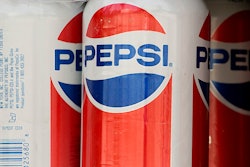Manufacturers contend with an array of challenges, from balancing inventory and demand to maximizing production quality. None may be as impactful (or overlooked) for the brand as ensuring compliance when shipping dangerous goods (DG), also referred to as hazardous materials (hazmat).
There are currently thousands of items classified as “hazardous” and that number continues to grow. As a result, modern shipping compliance regulations have become more stringent and numerous, only adding to the complexity of handling and moving dangerous goods in a safe and secure manner throughout the supply chain. Unfortunately, many manufacturing organizations find themselves lacking the infrastructure or training protocols necessary to stay on top of DG compliance. And in many cases, this negates any gains made in achieving optimal inventory balance or producing quality goods, and ultimately results in significant impact to company efficiency, competitive agility, reputation and bottom line.
Manual Processes & Insufficient Training Part of the Problem
Despite modern digitization of the manufacturing process itself, when it comes to the DG compliance aspect of doing business, many manufacturers remain reliant on manual processes. This translates to searching regulatory publications by hand to find the latest rules related to packaging, labels and documentation. It also means manually maintaining classifications for products considered hazardous, including quantity and packing stipulations. Not only is such a manual approach overwhelmingly inefficient, it is also highly susceptible to human error, which can further exacerbate noncompliance issues.
And, unfortunately, the instances of such inadequate processes related to DG shipping also carry over to compliance training. While training is imperative, and has mandates around it, many organizations still do not provide the in-depth, value-added training necessary to ensure compliance across their entire supply chain. This is, in part, due to the common sentiment that training is nothing more than a “necessary evil.” As a result, only the bare minimum of training is completed to ensure a satisfactory level of compliance with more well-known regulations, resulting in knowledge gaps that leave manufacturers vulnerable to shipping violations and noncompliance issues leading to hefty fines and other business consequences.
Noncompliance = Risks Above and Beyond Fines
Receiving a fine is the most common risk for organizations that fail to meet DG shipping compliance regulations. But it is not the only risk to a company’s reputation or bottom line. In fact, a fine may actually be least a company’s worries. That is why it is important to consider the bigger picture and realize the true impact compliance (or noncompliance) can have on an organization, and how a strategic approach to DG shipping can mitigate more serious issues down the line:
- Finance and compliance are linked. In any organization, leadership is concerned with revenue and growth. And DG shipping noncompliance can have a direct impact on profitability. From the hidden costs of inefficient operations, to costs related to stopped shipments (which can add up to millions of dollars in fees, expenses and lost revenue) and increased insurance liability following an accident or disaster, manufacturers must put compliance front and center to avoid sinking their bottom line.
- Public sentiment is reality. An incident involving noncompliance with shipping dangerous goods can put the public at risk, and create a firestorm of negative press that is hard to recover from. Customers, business partners and the public in general may decide it is time to find another manufacturer that is more trusted and reliable, leading to a tarnished reputation and devalued brand equity (the true cost of which can greatly outweigh the financial impact of initial fines).
- Customer trust is gold. Manufacturing organizations cannot afford to let incorrect shipping labels, incomplete shipping papers or any other DG compliance-related shipping error impact customer service. Stalled shipments result in late deliveries, customer dissatisfaction and can potentially lead to additional penalties levied by the customers themselves. Or, even worse, the damage done to the customer relationship may be irreversible.
Improving Hazmat Shipping Compliance – A Look Ahead
Modern manufacturers have embraced digital and automated technologies like the Internet of Things and the cloud to streamline operations and achieve a more competitive, lean manufacturing posture. By extending this thinking to DG compliance, organizations can likewise place this process under a more modern, automated umbrella.
So while many manufacturers still struggle to overcome compliance challenges, the positive news is that, in many cases, they will find that the groundwork for improvement has already been laid. The key to better regulatory adherence, and in turn more successful operations support, lies in better managing the DG shipping process itself. This includes automating manual processes and elevating the level of compliance training across the organization.
In the end, this process shift (and shift in thinking) will result in improved operational efficiency and a reduced chance for stopped shipments, all of which can lead to faster shipping and movement all along the supply chain, improved customer satisfaction, an enhanced competitive advantage, and the ability to drive more revenue.
# # #
1 “A Brief Overview of the Hazardous Materials Shipping Industry.” HazmatSchool.com. https://www.hazmatschool.com/blog/a-brief-overview-of-the-hazardous-materials-shipping-industry-from-cargo-classifications-to-dot-hazmat-certification/
Alicia Saenz serves as senior consultant for Labelmaster.



















